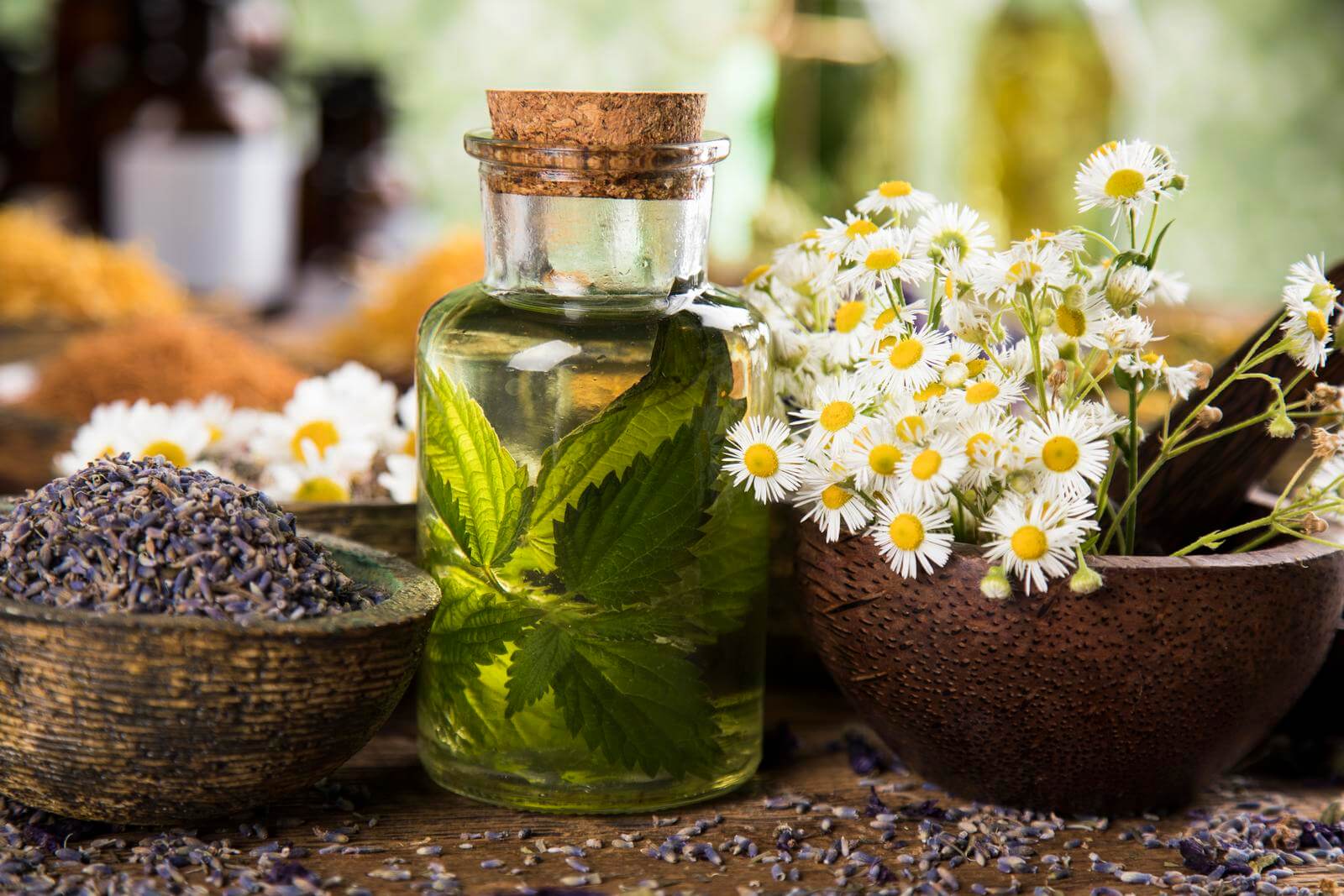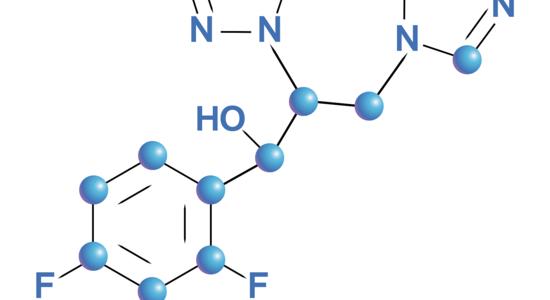See all "Candida glabrata" Section Topics

Although most vaginal yeast infections are the result of Candida albicans, a substantial minority of these infections are caused by Candida glabrata. Typically, Candida glabrata is the second leading cause of vaginal Candidiasis; accounting for approximately 5% of all vaginal infections. In the past, glabrata was called Torulopsis glabrata. This is no longer the primary nomenclature for this fungus. So, if you were wondering if the two had any similarity, the answer is they are both the same thing.
It is not uncommon for some forms of Candida glabrata to be able to withstand azole antifungal drugs. Itraconazole, miconazole (active ingredient in Monistat), ketoconazole, clotrimazole, and fluconazole are all common antifungal drugs a doctor might prescribe for you. If you have taken these drugs, and found little or no relief, you may have a strain of Candida glabrata that is resistant to these treatments.
Natural treatments can work where conventional drugs fail. Proving this, is one study, published in the Canadian Journal of Microbiology [2008, 54(11): 950-956, 10.1139/W08-097]. The research found that certain essential oils were able to effectively kill species of Candida that were resistant to fluconazole. In fact, the fluconazole resistant species of Candida were even more susceptible to essential oils than were the strains of Candida fluconazole would kill. Thus, using a natural remedy could quickly wipe out a drug resistant yeast infection.
Having severe, chronic yeast infections that do not respond to treatment is not that uncommon. One study, published in Sexually Transmitted Infections [2001; 77: 212-213], studied 3 different women with vaginal thrush. Two of the women in the study, had Candida that was resistant to more than just one prescription antifungal drug. It may be, that your story will sound similar to that of the first woman in the study. The researchers refer to her as “Case 1” and they give a summary of her condition as follows:
A 42 year old woman presented with “recurrent vaginal thrush” since the age of 19. At referral she had had several recent swabs showing heavy growths of candida species in Gram stain microscopy despite 3 months' treatment with itraconazole 100 mg twice daily for 2 days every week, two Depo-provera (Pharmacia & Upjohn) injections, and a number of other unspecified antifungal treatments including courses of nystatin pessaries. None of these produced any symptomatic response. https://dx.doi.org/10.1136/sti.77.3.212
This type of condition may be something you are experiencing; repeat doctors visits, or use of over-the-counter treatments—yet, still no end to vaginal yeast infections. If you do, in fact, have Candida glabrata, you may not be able to get relief with some azole drugs—as mentioned earlier.
One study also looked at how herbal treatments worked against a strain of Candida albicans that was resistant to multiple drugs. The study was published in Molecules (2009, 14(2), 586-597) and details the methods for which this drug resistant yeast was tested. The researchers found, that multi-drug resistant Candida albicans, could indeed be cured by using the following herbs: gum arabic tree (Acacia nilotica), clove (Syzygium aromaticum), and cinnamon (Cinnamum zeylanicum).
Since Candida albicans is much more ubiquitous than glabrata, it is likely you have an infection caused by albicans. Thus, even if it is a drug resistant version of this fungus, you should be able to utilize a natural method to safely, and effectively, get rid of this vaginal problem.
Given this helpful study, it is pragmatic to draw the conclusion that natural treatments can work where conventional drugs cannot. Additionally, it is often far safer to use a natural remedy than to put a synthetic drug into your system; which can cause a host of negative side effects. You might not see too much about natural remedies on the television or in magazines; but, this is due to the fact there is no money to be made by a giant pharmaceutical company from their use. Money unfortunately, tends to drive our awareness. But, with the advent of the internet, there is more than enough information available on the efficacy of natural yeast infection treatments.
A 1/2 Day & Yeast is Gone!
Linda Allen suffered from yeast infections for years. Through researching natural medicine & Candida, she found an efficacious solution!
Linda is one expert you want on your side! Let her show you how to get rid of a superficial yeast infection in just 12 hours; AND, keep it gone!
A 60-day, 100% money back guarantee is provided.
Visit Official Site!Natural Treatments for Vaginal Candida Glabrata

It is important to know that many yeast infections are caused by Candida living in the digestive system. If you have a healthy colony of yeast growing in your gut, it can very easily move from the rectum to the vagina; and, repeatedly infect you. If you want a solution to naturally remove this fungus in your gut, read the treatment plan at this page: Candida glabrata treatment guidelines.
After you have your digestive system sorted out, you can also start fighting Candida glabrata in the vagina. Here is one method to naturally heal your vagina:
- Cleanse the Vagina — One study done on rats was able to see improvement in vaginal candidiasis by washing of the vagina. Consequently, the first step to getting rid of a yeast infection, is to clean out the vagina by gently washing it with water and removing any excess yeast.
- Douche with ACV — Apple cider vinegar (ACV) can help to acidify the vagina and stop the progress of yeast naturally. But you need to use a diluted concentration; as plain ACV can cause irritation to the skin; and, it can cause chemical burns if it is applied too frequently or allowed to be in contact with the body for a long enough time. Nearly all Candida will be killed by a 1% concentration of ACV; so you don’t need much. Just simply douche with highly diluted ACV and let it sit in the vagina for a few minutes. Alternatively, you can use a very weak concentration of ACV with a tampon; and, insert it into the vagina (more on this here: Using an ACV tampon for yeast infections).
- Apply Essential Oils — Essential oils are a powerful tool, that harness the chemical constituents of medicinal plants; and, allow you to employ them easily. You should put some inert oil (such as olive oil) in a cup to act as a carrier. Then add one or two drops of the following essential oils: clove, thyme, oregano, cinnamon, and lemongrass. Make sure you are using 100% pure essential oils. Mix the oils together with the olive oil, and let a tampon soak in the mixture. Once absorbed by the tampon, insert the tampon into the vagina. Leave the tampon in as long as it feels comfortable. Make sure you remove it if you start to feel any pain. You may wish to experiment with smaller amounts of essential oil, to see how your particular body reacts to the oils.
- Nightly Maintenance — Take a bulb of garlic and get a few cloves from it. Peel the cloves and put them in gauze and insert it into your vagina before you go to sleep. Garlic is a powerful antifungal; and, will work through the night to combat Candida. Remove the garlic in the morning of course!
- Add Probiotics — To replenish the natural bacterial flora in your body, and to keep yeast at bay in the future, insert Lactobacillus acidophilus pills into your vagina in the morning. L. acidophilus will consume excess sugars in the vagina and secrete lactic acid; both of these actions will help keep Candida from reinfecting your vagina.
- Repeat as Necessary — If you do not have relief when you wake up in the morning, consider repeating this procedure for a few days. You can always try crushing the garlic up before you insert it, as this will allow it to form the chemical allicin; but be warned, you might irritate your vagina using crushed garlic. If you feel comfortable with stronger concentrations of essential oil; this might work better—however it could irritate your vagina if you try too high of a concentration.
Eliminate Bacterial Vaginosis & Vaginal Odor
Jennifer O’Brien is one prominent expert on BV that knows how to get rid of vaginal odor. BV is a common infection that you don’t have to put up with.
Jennifer will show you how to naturally eliminate vaginal odor in just 3 days.
A 60-day, 100% money back guarantee is provided.
Visit Official Site!A Natural, 12 Hour Yeast Infection Cure

According to a research paper published in Clinical Microbiology Reviews [12.1 (1999): 80-96], Candida species are quite ubiquitous organisms. Candida are most frequently present in the mouth; and, live in 31% to 55% of healthy people. The species that causes approximately 70% to 80% of all Candida infections is C. albicans.
The Chinese Journal of Obstetrics and Gynecology [2011 Jul;46(7):496] reports there appears to be a correlation between intestinal Candida infections and vaginal yeast infections. And, this provides a clue, as to why yeast infections in general, can reoccur.
This study states, in 148 cases of vaginal candida infections, 33.1% of the women were infected in both the intestines and vaginal area. The recurrence rate of yeast infections, in women with simultaneous intestinal infection, was significantly higher than for women who did not have an intestinal infection. This study concluded that vaginal yeast infections are highly associated with simultaneous intestinal Candida infection.
As research appears to indicate, systemic Candida infections can and do happen. A more systemic Candida infection may primarily get a foothold in the intestines; and cause a wide array of problems. If your yeast infections keep happening, a systemic Candida problem may be why.
One woman who suffered from a systemic Candida infection, for about 12 years, was Linda Allen. The systemic Candida infection that attacked Linda caused a wide range of health problems in addition to yeast infections. Some of these problems, Linda describes in her own words in the following quote:
To be honest, it was hard to pinpoint exactly what was wrong: I wasn’t really sick, but I wasn’t really well either. I had listlessness, fatigue, brain fog, stomach ailments, unexplained rashes, skin infections, and so on. It seemed like every day brought a new challenge.
My energy was sapped and I felt exhausted, which affected my grades and put a big dent in my social life.
Linda Allen’s symptoms included an embarrassing vaginal discharge, severe itching, and burning sensations. Her infections were difficult to deal with, and Linda’s health problems cost her financially as well. Linda states these infections of Candida can become excruciating when they happen as frequently as a menstrual period.
Yet, Linda spent a great deal of time in research; and even questioned health professionals who were kind enough to share some time with her. Linda even tried an array of purported "cures." Although it took a while, eventually, Linda put together a natural treatment plan she hoped would solve her Candida situation.
After spending about a year refining her new approach, Linda tried her system on herself. It worked amazingly well. Linda even returned to a few medical doctors to get tested for the presence of infections. These tests revealed all indicators of infection had vanished! Linda was indeed well again, after such a long, difficult journey.
Linda has since published a book detailing how to copy her success. She also includes a 12 hour yeast infection cure that can get rid of a superficial (such as a genital yeast infection or oral thrush) yeast infection in about 12 hours.
Linda’s publisher protects those who get her book with a 60 day, 100% money back guarantee. Linda’s publisher, a subsidiary of the United States based firm Keynetics Incorporated, is a reputable digital retailer that has been around for a long time. They have great customer service, and make getting a full refund on Linda’s book quick and easy. If you’re not satisfied, you can quickly get all your money back.
If you would like to learn more about Linda’s journey to freedom from Candida, see reviews of others who tried her natural system, or find out more about her efficacious book; you can find more information at Linda Allen’s website.
Author: Mr. Nicholas Gross

Nick Gross is a natural medicine enthusiast who has been researching and writing about natural medicine since 2008. Nick is primarily a web developer but also researches and authors written and video content about natural health. Nick has a bachelor’s degree in Management Information Systems from the University of Northern Iowa.
Disclaimer
The information on this website is not a prescription for anyone. This information is for informational or educational purposes only, and is not a substitute for professional medical advice or consultations with healthcare professionals.
Affiliate Disclosure
Some of the links provided on this website are affiliate links. When a purchase is made through these links, Candida Hub earns money from commission. This helps to keep the website up and helpful to people for free. Thank you for any support!
Stay Up to Date
If you enjoyed this article, consider following / liking our Facebook page. This page is primarily utilized to alert followers of new articles that are put on Candida Hub. Candida related news is also discussed. While you are there, you can see what has been more recently added to Candida Hub.
Clair Goodall: Author & Nature Lover
Clair Goodall is a bee-obsessed natural medicine convert from Minnesota. She is one expert you might want to know more about!
Clair will help you protect you and your family from toxic products and chemicals and help you discover solutions from nature.
Also, Clair’s book is backed by a 60-day, 100% money back guarantee
Visit Official Site!SOURCES:
- http://www.nrcresearchpress.com/doi/abs/10.1139/W08-097 — In vitro activity of essential oils extracted from plants used as spices against fluconazole-resistant and fluconazole-susceptible Candida spp. Patrícia Pozzatti, Liliane Alves Scheid, Tatiana Borba Spader, Margareth Linde Atayde, Janio Morais Santurio, Sydney Hartz Alves. Canadian Journal of Microbiology, 2008, 54:950-956, 10.1139/W08-097
- https://dx.doi.org/10.1136/sti.77.3.212 — Combined topical flucytosine and amphotericin B for refractory vaginal Candida glabrata infections. Sex Transm Infect 2001;77:212-213
- http://dx.doi.org/10.3390/molecules14020586 — Antimicrobial Activity of Five Herbal Extracts Against Multi Drug Resistant (MDR) Strains of Bacteria and Fungus of Clinical Origin. Molecules 2009, 14(2), 586-597
- http://doi.org/10.1248/bpb.31.1501 — study done on mice using vaginal washing — Protective Activity of Geranium Oil and Its Component, Geraniol, in Combination with Vaginal Washing against Vaginal Candidiasis in Mice. Biological and Pharmaceutical Bulletin Vol. 31 (2008) No. 8 P 1501-1506
- https://doi.org/10.1128/CMR.12.1.80 -- Fidel, Paul L., Jose A. Vazquez, and Jack D. Sobel. "Candida glabrata: review of epidemiology, pathogenesis, and clinical disease with comparison to C. albicans." Clinical Microbiology Reviews [12.1 (1999): 80-96].
- https://pubmed.ncbi.nlm.nih.gov/22041440/ -- Lin XL, Li Z, Zuo XL. "Study on the relationship between vaginal and intestinal candida in patients with vulvovaginal candidiasis." Chinese Journal of Obstetrics and Gynecology (Zhonghua fu chan ke za zhi). [2011 Jul;46(7):496].








